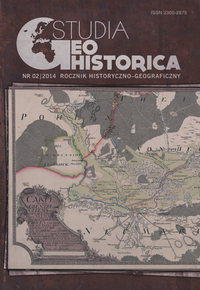Koncepcja wykorzystania interaktywnych prezentacji kartograficznych jako narzędzia w procesie edukacji geograficzno-historycznej
The concept of using interactive cartographic presentations as a tool in the process of geographical historical education
Author(s): Teresa Bogacz, Beata KonopskaSubject(s): Maps / Cartography
Published by: Polskie Towarzystwo Historyczne
Keywords: didactics of history;didactics of geography;education;school map;education tools
Summary/Abstract: Cartographic documents in the form of maps and atlases are one of the forms facilitating communication in the relation between the teacher and the pupil in the process of knowledge transmission, mainly in the fields of geography and history. Spatial information on places, phenomena and events, both natural and socio-economic ones, taking place currently and in the past is presented on maps in the form of cartographic signs. New possibilities of using the maps appeared together with the development of computer technologies. Th e present article approaches a few important aspects of the subject, namely how the process of using the maps as a means of communication should proceed at different levels of education, how technological achievements affect the improvement of the map, and how this influences the potential effectiveness of education and the possibility of the pupils using the acquired abilities in the further out-of-school practice. A geographical or a historical map, both in its traditional, paper form and in a multimedia edition, is an effective tool of communication after having fulfilled a few conditions, e.g. compatibility of the map’s content with the curriculum and the information capacity of the scale in which it is presented as well as the map’s graphics prepared according to the principles of cartographic semiotics. Both these conditions – the first related to the map’s content and the other connected with its graphics – are closely related to the user’s features. In the case of the receivers of school maps, the users are characterized by different perception and experience, depending on age. Different requirements concerning the cartographic form of communication are imposed by pupils with eye defects (visually impaired, blind). At the first stage of teaching both geography and history, the teacher, who teaches how to interpret the map through discussion and explanation, plays a key role in the process of communication between the map and the pupil. On the high school level, communication in the relation between the map and the student acquires a direct dimension and it does not require the teacher’s participation any more.
Journal: Studia Geohistorica
- Issue Year: 2014
- Issue No: 2
- Page Range: 165-177
- Page Count: 13
- Language: Polish

